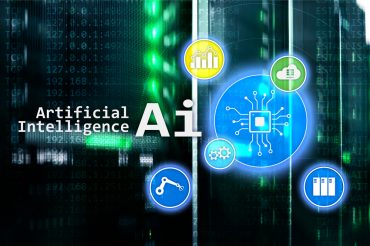
Managing and leveraging the right data to feed AI and analytics requires leadership from both the technical and business sides of an organization.
Without the right data, advanced initiatives from artificial intelligence (AI) to customer analytics are essentially non-starters. Data, or lack of it, remains the Achilles Heel for many organization attempting to move forward into this new world.
That’s the cautionary word from industry leaders participating in a panel discussion, sponsored by CIO, which explored how data can be a growth multiplier for organizations and can accelerate and improve decision-making across organizations. Having the ability to acquire and manage the right data is key to crunching numbers, analyzing trends, gaining insights, and making decisions.
The key differentiator in today’s environment “is the data that they have,” says Manikandan Thangarathnam, senior director of mobility and platforms for Uber. Before, “technology itself was a differentiator for a lot of companies to really become big. “But today, with the advent of cloud providers and services, technology by itself is no more a differentiator. People can really quickly build large-scale distributed system software and they can bring it up to speed.”
But getting the right data involves more than simply reaching out and acquiring datasets. “It is a continuous struggle — you have data, but you don’t know how to connect it, you don’t know how to drive inside out of it,” said Ashish Pandey, CIO of GSK. “You want to give a problem statement and drive value out of it. But to date, I haven’t seen a system which just sucks up the data and says that this is what you should be looking into.
See also: ‘Lack of Truthfulness’ Hampers Generative AI Adoption
It’s not like Netflix, “where you can see what you should watch next,” Pandey continues. “The data is still not telling me that what should I start looking into, what should I do, unless I build that analytics, unless I have a problem statement in mind.”
Managing and leveraging the right data to feed AI and analytics requires leadership from the business side as well. “It all boils down to what the primary objectives as an organization, and the primary objectives as a data unit you are trying to achieve,” says Anand Tuli, head of analytics and decision sciences for Vedantu.
This is particularly important as real-time data is brought in, he continues. “Bringing in real-time data not only requires putting in systems which can understand real-time streams. It takes a huge undertaking with respect to not only money, but also the focus and the time of your engineering unit. Once those systems are built, you need to understand and maintain and scale those systems to put multiple solutions on that.”
Volumes and use cases for real-time data will continue expanding exponentially, especially as 5G achieves critical mass, observed Sanjeev Chaube, executive VP and head of big data and advanced analytics for Vodafone Idea Limited.
At Uber, it’s a matter of managing real-time data for close to 4.5 million drivers, Thangarathnam pointed out. “We get events every four to five seconds from them to know where they are. Eventually what we are solving is a problem of operating in 10,000 cities and 70 countries and enabling two people meeting in middle of the road or in front of a house somewhere.”
Uber’s technology makes, in real time, “decisions between cost, convenience to customer, helping make the right decision on behalf of the customer, so that you provide the right matching between two parties so that the transaction can happen,” says Thangarathnam. “You need these technologies in place. otherwise it is not possible.”
Ultimately, of course, the success of AI depends on not only data, but figuring out how to best serve customers. “It is about how best I can solve problems of my consumer,” says Ashish Pandey, CIO of GSK. “Our purpose is not just gathering insights, the purpose is not just gathering data. The purpose is that how best I can help them.”
At Uber, this help needs to be delivered in real time, while handling multiple customer inquiries, Thangarathnam relates. “Can you compute close to real time and give a really good experience? Can you use a bunch of ML and AI data that you have in place right so you can make the decision making faster? We track one million trips, but the number of people who actually look at the prices is actually 5x. You usually look at the price, or maybe you will decide to take the ride after five minutes. So you are talking about 10 million sessions happening at the device. Operating at that scale is the most important challenge today that we have.”





























